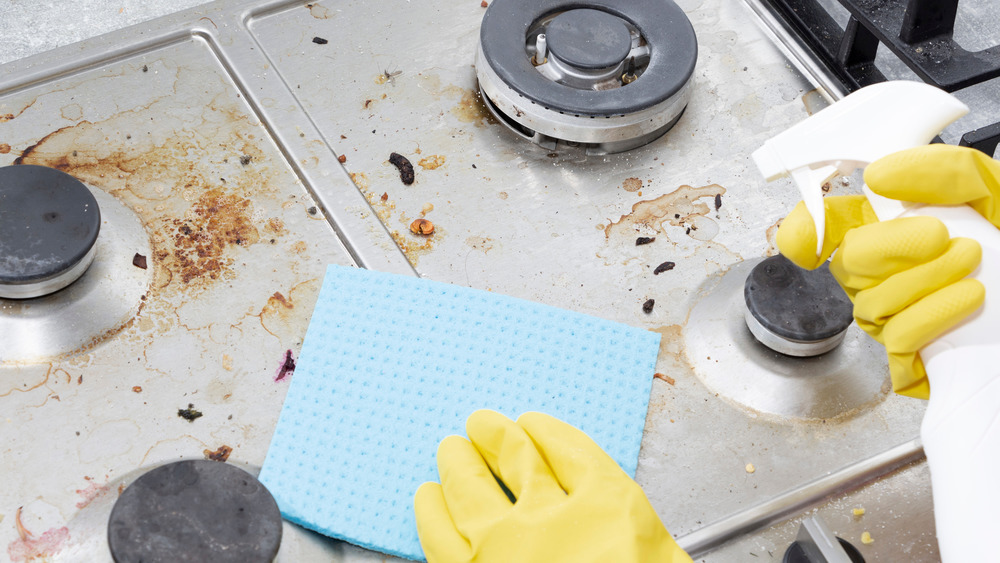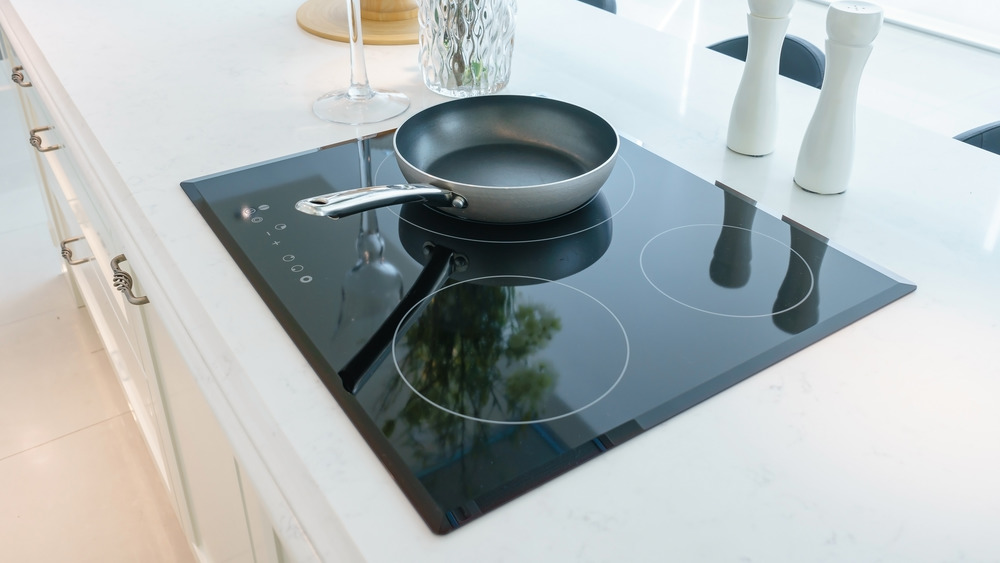This Is The Easiest Type Of Stove To Clean
We may receive a commission on purchases made from links.
Cleaning the stove is everyone's favorite kitchen chore, said no one ever. Cleaning the stove is actually one of the dirtiest and least coveted household chores in our experience. In fact, it's right up there with cleaning the bathrooms, if you ask us. We would rather pay someone to clean the greasy grime that can build-up after a few uses rather than do it ourselves. Cleaning the stove can also be hard work, and it really does require someone who is meticulous in the tasks they undertake, depending on what type of stove you are cleaning. That's why if you are in the market for a new stove, you should do a little reconnaissance to determine which type will be the easiest to wipe down after each meal. Trust us when we say a stove that is easy to clean will make you happier to cook.
According to Home Depot, electric stovetops are the most commonly purchased, with cost and durability being their greatest assets. The site also notes that electric stovetops that boast metal surfaces are easier to scour without fear of hurting their surfaces. Here is what you need to know if you select this stovetop.
Smooth top electric cooktops are the easiest to clean
Per Compact Appliance, smooth top electric cooktops are among consumer favorites for the very fact that they are easy to clean. Hunker notes that because this type of stovetop doesn't have all of the nooks and crannies that say, a gas stove has, you don't have to worry about crumbs getting lost on your stovetop or food that boils over going to unseen places. As a matter of fact, when food finds its way onto your stove's surface, smooth top electric cooktops allow a user to simply wipe it down with a soft cloth to get rid of the grease. However, when you find yourself dealing with a pot that has boiled over and left a mess, you want to clean that up ASAP or risk it staining your stovetop.
To make cleaning even easier, you should skip using cleaning products that list ammonia as an ingredient. Why? Because it can leave glass streaky. You should probably also want to skip abrasive cleaners and tools in order to limit the possibility of scratching a surface. But, if you find some stubborn food remnants, use a razor scraper tool and spray some vinegar on the tough cooked-on buildup to loosen it up. But with all the brouhaha, one user on Meta FIlter warns that wiping it down with a damp sponge can still leave spots.

